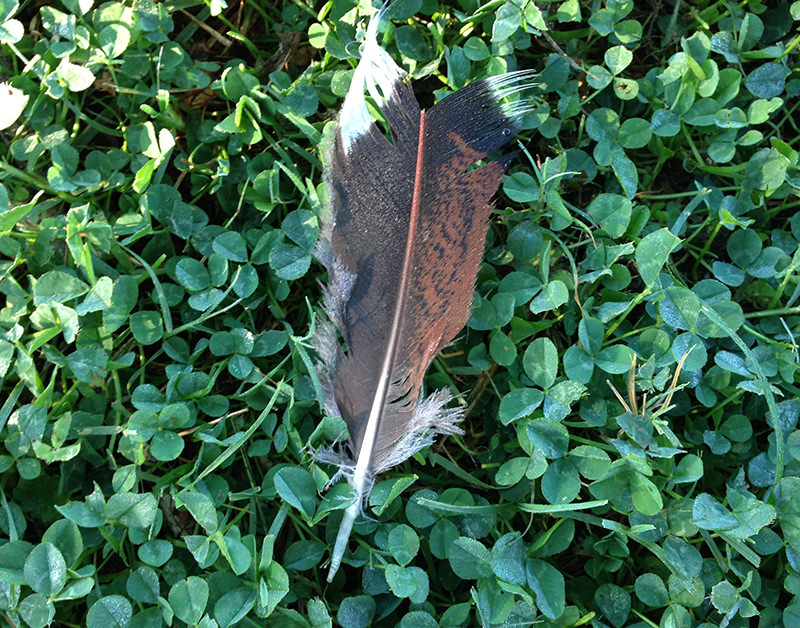

Rachel Hurd Anger
Our flock’s annual molt has always begun with the Polish in mid-summer. Next is the Partridge Plymouth Rock in late summer. In early fall, it’s the Australorp’s turn. Finally, the Silver Laced Wyandotte experiences her awkward nudity through the chilly days between Thanksgiving and the first days of December.
This year, we’re anticipating the first molts of our four newest hens that recently graduated from pullets. This is an exciting time!
During the first molt, every feather is replaced with the breed’s most vibrant and beautiful colors. Every feather gets better than the feathers of the first year. Those first feathers, remember, grew between the awkward teenage phase to the mature laying pullet phase. Those first feathers are duller than your birds’ genetically predetermined hues.
By the end of the feathers’ year, chickens look a little rough around the edges, so they molt to replace the old, tattered feathers with new thick coats to last them through the coming winter.Starting winter with last year’s feathers would be so last season and probably not warm enough.
Whether you’re new to an annual molt or you’re a seasoned pro, the process can be concerning and even horrifying—it’s not pretty. Here are a few things you can expect:

Rachel Hurd Anger
1. Each breed molts in its own time.
If you raise just one breed, expect them all to molt around the same time. If your flock is varied, they will most definitely take turns. The annual molt isn’t a common topic concerning the characteristics of individual breeds. Knowing when your breed(s) molt can help you plan ahead for lean egg weeks in the laying season.
2. The molt is sudden.
The annual molt happens with no warning. One day everyone is sufficiently feathered. The next day a hen has bald spots. Even if you know the molt is coming, its suddenness can be shocking. You might suspect a predator scuffle before you can relax. “Whew! She’s just molting.”
3. Your yard and coop will be fluffy.
Feathers will be everywhere, and if your flock is made up of various breeds, you’ll know who’s molting just by looking at the ground. Feathers will decompose in a compost bin, if you’ve got the determination to pick them up. Small feathers, like the butt fluff feathers, are favorites of small wild birds. If you leave them scattered on the grass, visitors will fly by to pick them up for their own nests. It’s fun to watch some determined birds struggle to fly off with wing feathers.
4. Your chickens will show their true colors.
The flock will show its truest colors after the first molt, and each chicken will look fabulous. Until then, accept that the chickens will look shamelessly plucked.
5. Your nest boxes will be empty.
While molting, chickens divert their protein energy away from egg production to produce new feathers. At the end of the molt, your hens will resume laying eggs without a hitch.
6. You can support your flock with diet.
Providing a higher-protein feed, like 18 percent if you’re usually feeding 16 percent, can help them recover from the molt a little faster. Or if you have a surplus of eggs on your counter or in your fridge, cook some of the oldest eggs and feed them back to the chickens. Feeding cooked eggs will not lead to raw-egg eating. The chickens will love them.
Read more of Chicken Quarters »




